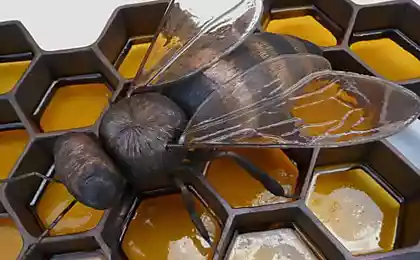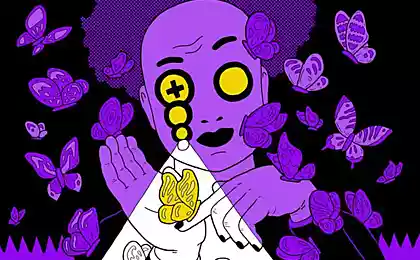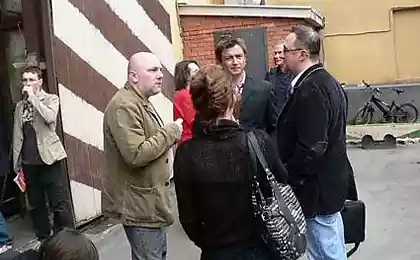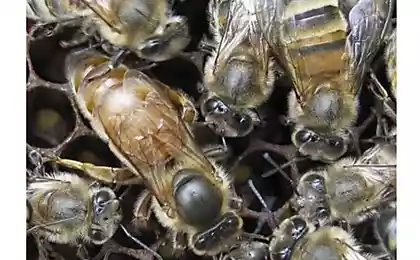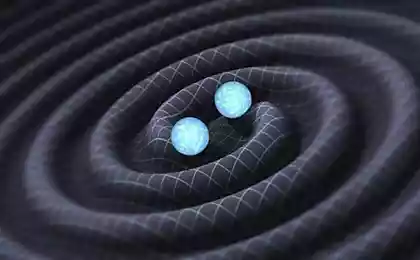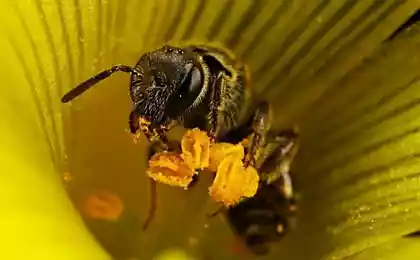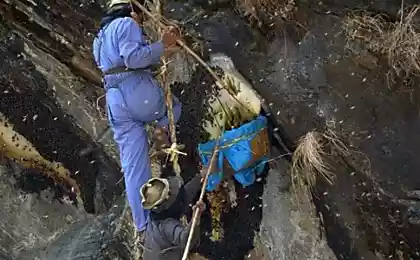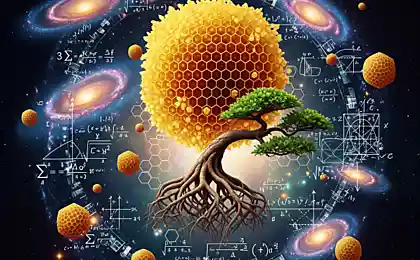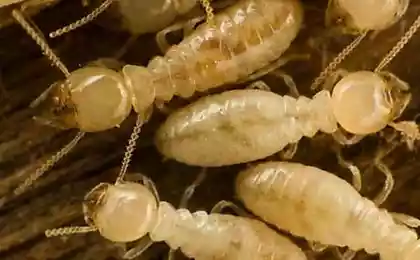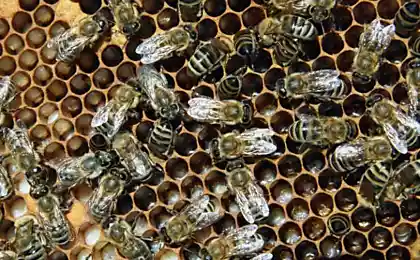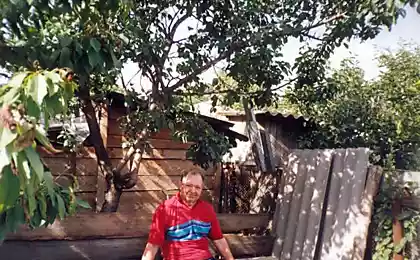450
The sculptures, wrapped honeycombs, Aganetha Dyck
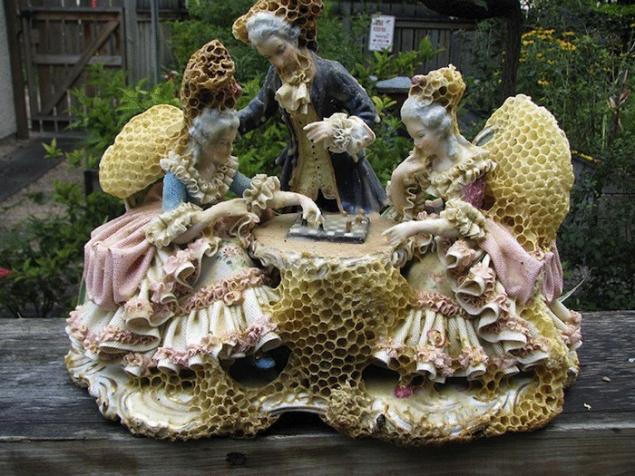
In the territories of North America and Europe, as in many other parts of the world, the population of honeybees over the past few decades has dropped by 30-50% (a conservative estimate) because of colony collapse disorder, a phenomenon when bees leave the hives, flying in an unknown direction.

The reasons for this behavior are not yet fully clarified, but the consequences we face: the destruction of bee colonies can cause serious damage to the ecosystem and affect the population of pollinated plants, not to mention the production of honey.
Canadian artist from Manitoba Araneta dyke (Aganetha Dyck) has long been interested in research in the field of interspecies communication, in particular, the consequences that may result in the disappearance of bees from the face of the earth. Together with the hardworking insects that are in this unenviable position, the artist creates delicate art objects, using for this purpose porcelain figurines, shoes, sports equipment and other household items.
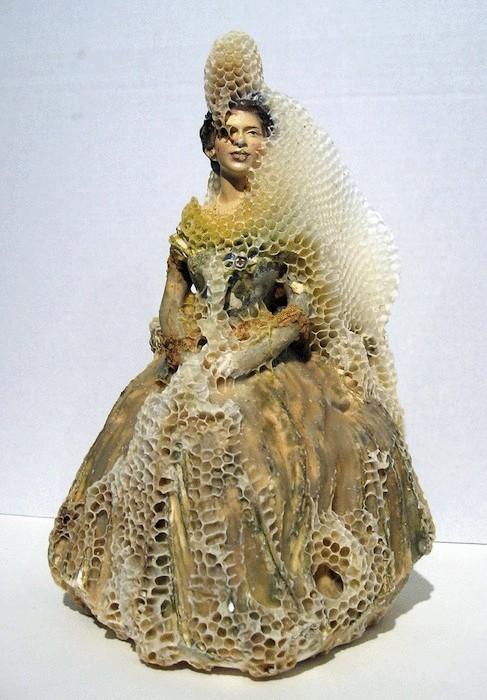
Dyke leaves the future of art in a special pchil'nyky where enterprising residents of the colony immediately begin to decorate a new piece of furniture honey combs. For several weeks, and sometimes months, covered with beeswax, the object is completely transformed.
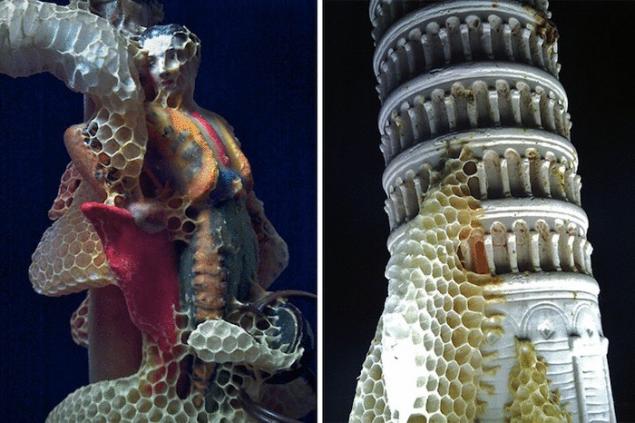
Sculptures dyke, in addition to an interesting aesthetic effect, intended to convey to the audience is not new, but ever-present idea: people should learn to take into account the fact that we are not the only form of life on planet Earth. Our existence depends on the General welfare of the global ecosystem —a complex multilevel structure, which sometime do not survive and will collapse if people continue to blithely pull it out of your whole links.
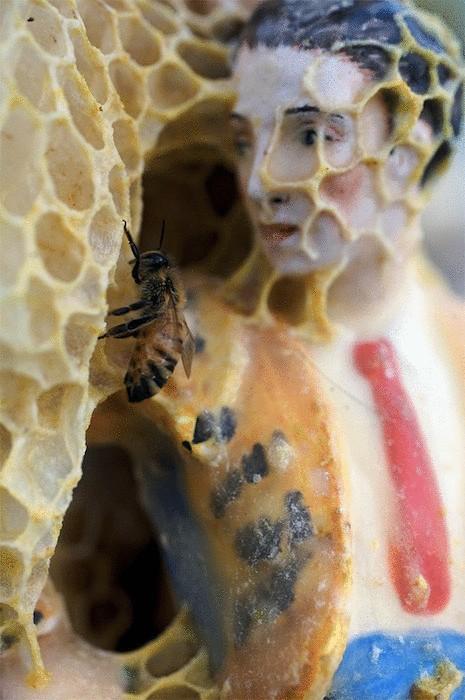
Moreover, treated bees items are really interesting to look at. "They remind us that all structures are short-lived compared to the period of life on earth and the processes that occur in nature," says Cathy Veri, Charles (Cathi Charles Wherry), curator of the exhibition, the dyke, which opens in March.
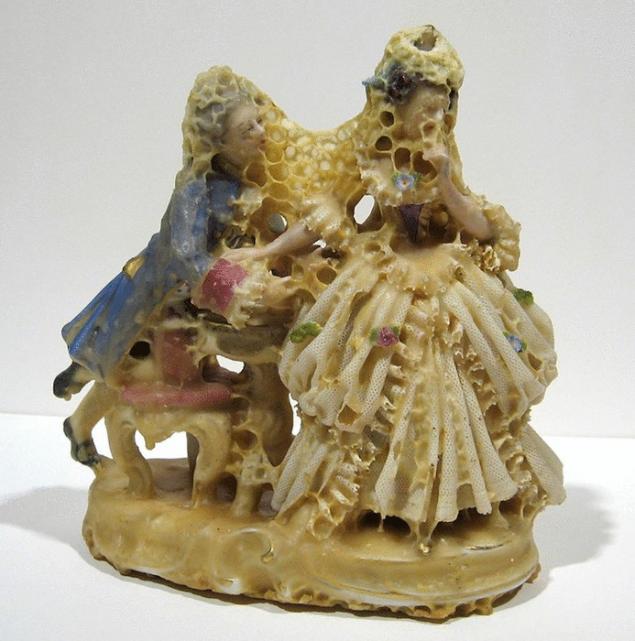
Bees not only work for the good of contemporary art, but also help to create an unusual advertising campaign. For example, more than eighty thousand Scottish highland bees participated in the creation of "3B" bottle for Dewar's Whisky.
Source: www.livemaster.ru/topic/429523-medovye-skulptury-ot-talantlivyh-pchel-i-aganetha-dyck
Dark oases: the unusual installation of paper and mirrors
In Ecuador: journey to the center of the earth

